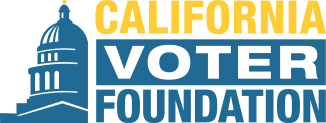Excerpt:
The card millions of Californians use to register to vote is receiving its first makeover in more than a decade, inspired in part by confusion over how to become an "independent" unaffiliated voter — a problem highlighted by a Los Angeles Times investigation in 2016.
"It's an issue that's been lingering for years," said Secretary of State Alex Padilla. "But that was the first time it was really in the spotlight."
The Times found a substantial number of Californians who registered with the American Independent Party wrongly believed they weren't part of any political party — an error that later kept some from casting ballots in the state's 2016 presidential primary.
"A combination of issues prompted us to see if there was a better way," Padilla said.
The postage-paid voter registration card was last revised in 2008. The forms are widely distributed in state and local government offices and through volunteer voter registration drives. Californians have until May 21 to register for the June 5 statewide primary.
The Times found a substantial number of Californians who registered with the American Independent Party wrongly believed they weren't part of any political party — an error that later kept some from casting ballots in the state's 2016 presidential primary.
"A combination of issues prompted us to see if there was a better way," Padilla said.
The postage-paid voter registration card was last revised in 2008. The forms are widely distributed in state and local government offices and through volunteer voter registration drives. Californians have until May 21 to register for the June 5 statewide primary.
The new voter registration cards will be distributed as soon as the end of this week, and officials say the design was completed without spending more money. Work on the new voter registration card began early last year. State elections officials consulted with voting rights advocates and local registrars on the best way forward.
-----
The focus of criticism has been the traditional paper registration document. Prior to 2008, Californians who wanted to opt out of choosing a party had to search for the option at the bottom of a list labeled, "Political party — fill in one oval." That year's revision resulted in a form that allowed a mark to placed next to a new statement reading, "I don't want to register with a political party."
In 2011, however, the wording became more complex. When voters changed the rules governing political primaries — a ballot measure that emphasized "party preference" — elections officials deleted the reference to party registration.
The new form, while attempting to simplify the choice, still uses the 2011 phrase, "I do not want to choose a political party preference." That may not be intuitive, some say, because non-party voters often prefer a party when it comes time to fill out the ballot — they just don't want to be labeled.
"I think a lot of people are still wrestling with what 'preference' means," said Alexander. In an interview, Padilla said additional clarity would have to come from the California Legislature.
"Given current state law, we did everything we could," he said.
Padilla said lawmakers also would be the only ones who could weigh in on whether a party should be able to use the word "independent" in its name — the word elections officials say voters frequently latch onto in a quick scan of the registration form. (full story)

